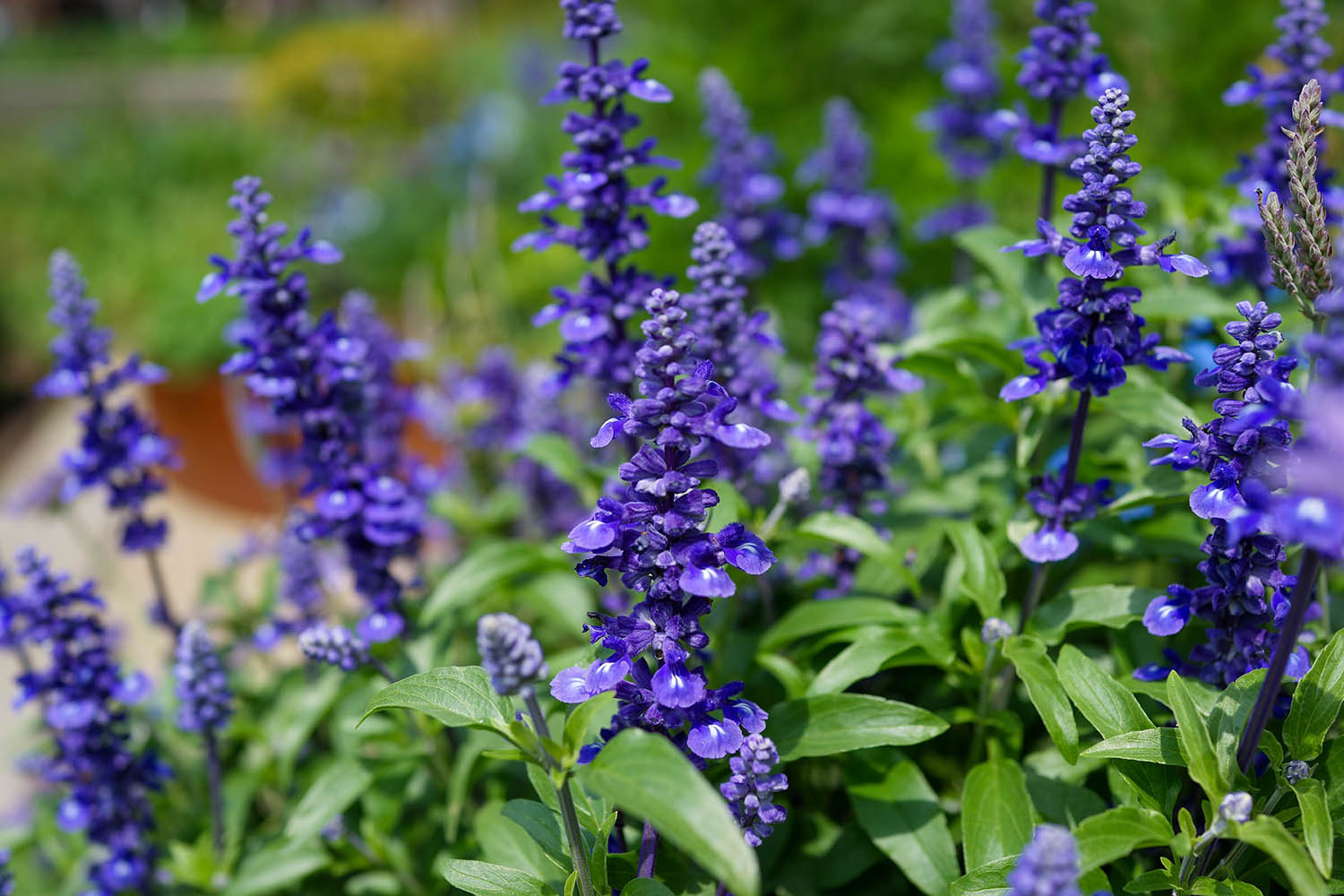By MIKE RALEY WPTF Weekend Gardener
Everyone should have some type of salvia in their landscape. Sage advice, I must say, if you like puns that is! Salvia also is known for its medicinal qualities for oral health, digestion problems and cognitive issues. I for one have never considered eating salvia. Sage is, of course, considered a culinary herb, so I suppose I have eaten some over the years.
There are over a thousand salvia species and just as many cultivars and hybrids. Just like several plants I have in my yard, salvia is part of the mint family. Most salvia flowers don’t have fragrance, however their foliage does. Salvia is also a pollinator favorite. Bees, butterflies and hummingbirds just love the taste of salvia. It thrives in full sun, but can also take partial shade. I think six to eight hours of sun works best. Some of the lighter colored varieties that might need a little afternoon shade in the summer.
Like just about every plant we enjoy here in North Carolina, salvia needs a well-drained soil. When planting, use some type of organic matter.
We often have drought conditions in North Carolina somewhere in the state each year. Salvia is a flower that adapts to these conditions once established. You should water salvia on a regular basis till established and during dry times.
Normally one would plant salvia after the average last frost in your area. In Raleigh that average date is April 15th. Break up the soil and dig the whole twice as wide as the rootball and about as deep. Add organic matter. Before placing the rootball in the hole, loosen the roots a bit and then plant with the top of the rootball level with the top of the soil surface. Fill in the soil mixed with organic matter and tamp down. It is always good to add 2 or 3 inches of mulch to the surface around the plant to protect the root system and preserve moisture.
I wouldn’t worry too much about fertilizing salvia if you’ve done your proper prep work, and normally I worry about everything. If you are overwhelmed with the urge to fertilize any plant, use a balanced, slow-release type.
Be cognizant of spent blooms in flowering plants. Salvia varieties will need some deadheading to encourage more blooms. Blooms give you more pleasure and then plants are more cost effective.
Summer pests might include aphids and spider mites. You may also experience some fungal disease problems especially with our summer humidity. The folks at NC State tell me salvia doesn’t seem to be a deer’s favorite food. However, Anne Clapp used to point out that when deer are hungry, they are likely to eat most any plant.
There are perennial and annual varieties of salvia. While most of these lovely plants we enjoy are not native to North Carolina, there are a few that are: Lyreleaf Sage, Azure Blue Sage and Nettleleaf Sage are among the varieties native to the “Tar Heel State”. However, salvia standards used by most of us in North Carolina include Salvia splendens, Salvia France’s, and Salvia leucantha. I love the Azure Blue and Scarlet Sage which are extraordinary red salvia and “Wolfpack” fans will dig the most. Many salvia varieties are native to places like the Mediterranean and Mexico.
We have spoken often on the “Weekend Gardener” about year round color in the landscape. Salvia will lend brilliant color to your yard from late April to the last frost of the year. And your favorite pollinators will thank you.
